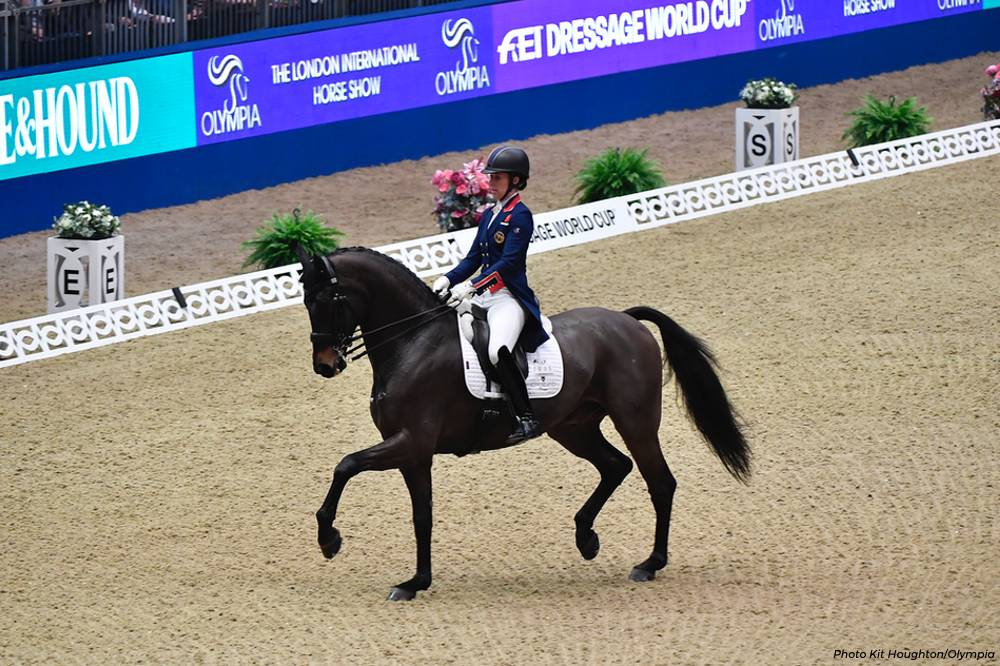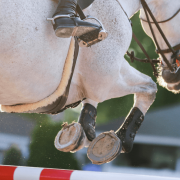Grand Changes At Olympia – But Are They For The Good?

My first visit to the London International Horse Show at Olympia was in 2004, when I had just started working full-time for an equestrian magazine. That year the inaugural FEI World Cup Dressage leg took place, with Carl Hester finishing runner up to Spain’s Beatriz Ferrer-Salat in front of a crowd of around 6,000 people – around two-thirds of the capacity of the famous glass hall.
The Grand Prix Freestyle was hailed a success, albeit on a lower key compared to the sell-out show jumping crowds. The previous day’s Grand Prix qualifier, by contrast, was played out in front of a sparse audience with little fanfare – if I remember correctly, the evening’s action included only dressage and none of the other displays or events that make Olympia so popular.
Less than a decade later and things were already very different. The Freestyle was now a sell-out event, helped in no small part by the Charlotte-and-Valegro effect and Britain’s dressage gold medal haul from the 2012 Olympics. Even the opening day’s Grand Prix test was slowly growing in popularity, with a full evening programme now surrounding the competition. But could it too reach the sell-out heights of the Freestyle event? The organisers believed so, and so this year saw a number of new changes with the aim of increasing dressage’s appeal as well as audience engagement.
The main change was the introduction of a new, shorter Grand Prix test. Reduced to five minutes in length, the test features less walk, shorter half-passes, no rein back and fewer extended trot movements. The tests were ridden to the accompaniment of ‘specially-chosen’ music, designed to showcase the combinations ‘personalities and interests’ (side note: these top dressage horses sound fascinating – my horse would list her interests as eating, sleeping and losing overreach boots).

Even more unusually, the riders did a quick dismount after completing their tests and in came their grooms to lead the (probably bemused) horses out of the arena. Then the riders were interviewed live in the middle of the ring, so they could share their slightly-breathless thoughts on how their test went with the audience, before their scores were announced live on screen to the accompaniment of pictures of each responding judge.
“You literally feel like you’re on Strictly Come Dancing when they say: ‘The judges’ scores are in’,” said Britain’s megastar Charlotte Dujardin, who finished second.
I don’t know if it’s just because it’s new, but I find halting at the bottom, straight into the half-passes, it was not easy to get flowing and going.
Some classical purists will see this as the further dumbing down of the sport – of broadcast and audience appeal superseding the true values of dressage. Richard Davison, a top British rider as well as the dressage consultant for Olympia, felt differently. “This pilot project is an exciting initiative aimed at adding considerably more spectator appeal, while maintaining traditional dressage values and a highly competitive format,” he said in a pre-show statement. He also pointed out that the existing Grand Prix test places too much demand on the dressage horse, who must continually perform the same lengthy test whether competing at a local show or the Olympic Games.
But what did the riders think of the new quick-fire Grand Prix? “The test rides really fast”, was the verdict of first-to-go, Charlotte Dujardin. “I don’t know if it’s just because it’s new, but I find halting at the bottom, straight into the half-passes, it was not easy to get flowing and going. It’s kind of a bit bitty and quick-coming. But that’s something that all riders have got to discuss, and judges, and together see what comes of it.”
Like this article? Try: There’s Nothing Typical About Thoroughbreds
The Grand Prix winner Hans Peter Minderhoud agreed: “Maybe it makes a difference with the stallions, but I quite like it when you come in and you can canter, and you can trot forward, and you have an extension first. You are really in the flow to start with the movements. Now you’re just on the centerline, you have to make the halt and you have to make the turn so it’s a lot of turning in the beginning. It took a little while to get in the rhythm. I think it’s good to get [the Grand Prix] more attractive but I think we have to improve the test, especially the half-passes, they are really short.”
Interestingly, there was not as many starters at Olympia this year (12 in the Grand Prix, compared to 16 in the previous two years), so not only were the tests shorter but there was fewer for the audience to watch. In this day of instant reactions, social media scrolling and Snapchat-attention spans, dressage is adapting to fit – but whether that’s a good thing for our sport remains to be seen. It’s the early days of an experiment, and there is likely to be plenty more changes to come, but if we start to see the same sort of capacity crowds on Grand Prix nights as there are for other sessions, then perhaps the Olympia organisers’ much-discussed gamble will have paid off.


